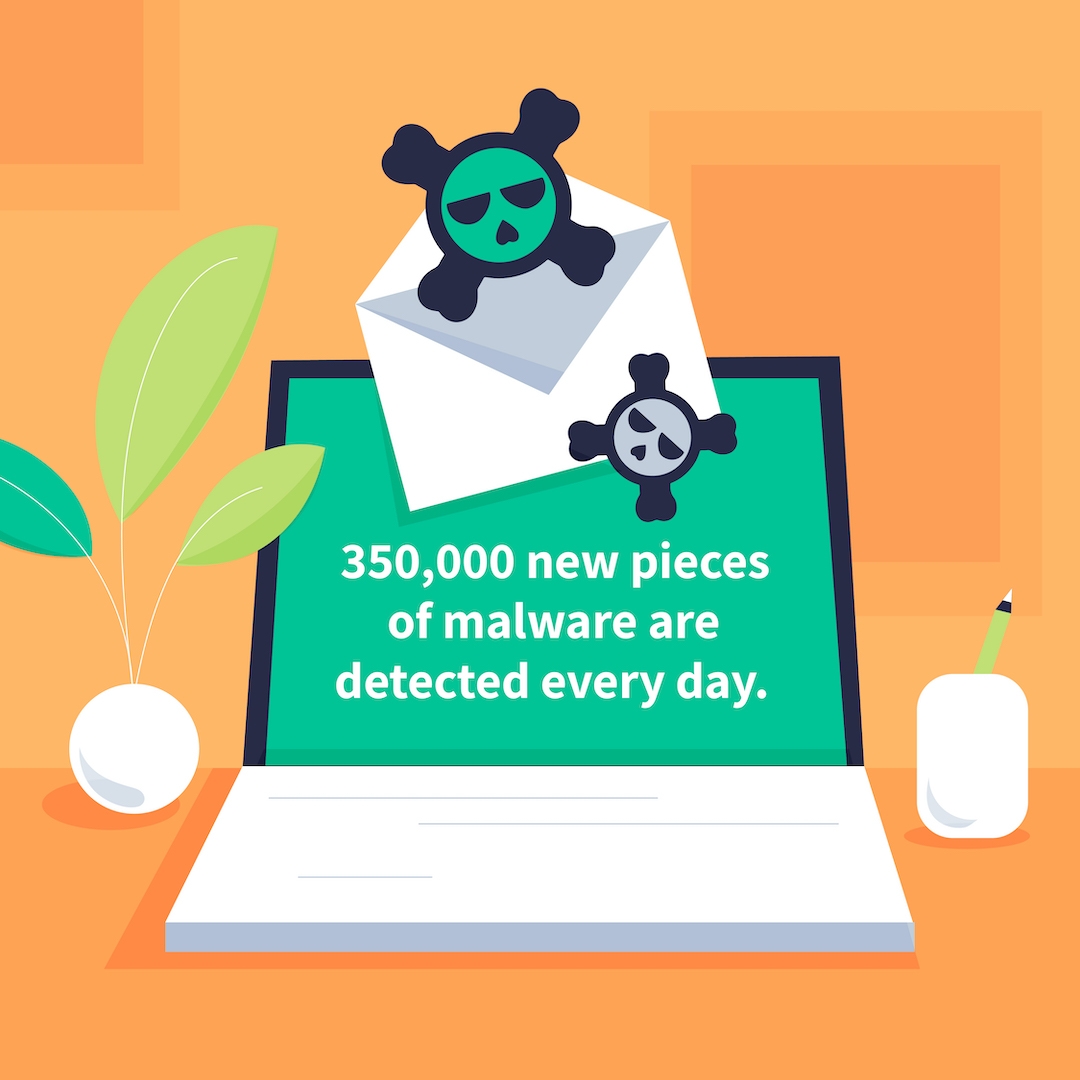What Now? What to Do If You’ve Downloaded Malware
Summary: You hear about big data breaches in the news, but a malware infection on your computer, tablet, or phone can cause you just as much trouble as a cyber-attack that makes the news. With hundreds of thousands of pieces of new malware detected every day, what can you do to stop a malware attack?

We hear about big data breaches in the news constantly, but most of us don’t think to worry about a personal breach, one that happens to you on your own computer or mobile device. But personal data breaches happen all the time, and they typically are caused by malicious software, aka “malware.” With over 350,000 new pieces of malware detected every day, it’s hard to avoid accidentally downloading software that will steal your identity, your money, and/or take over your device altogether. The good news is that you can take preventive measures to keep malware off your devices, but what if the worst happens and your computer is infected?
Stopping Malware
There are steps to deal with malware: detecting it, removing it and restoring your device if necessary, and then preventing future attacks. The details of these steps sometimes depend on the type of malware, but here are the basics:
How to Detect Malware
Most malware is designed to be invisible to the user, running in the background as it steals data, spreads through your network, or uses your computing cycles to power larger cyber-attacks. (Ransomware is the exception, and we’ll provide you all the details about ransomware in an upcoming blog.) But here are the telltale signs to watch for:
- You notice your computer is running very slowly.
- You suddenly see pop-up messages that are hard to close or remove.
- You notice unfamiliar computer programs start to launch on their own.
- You hear the hard drive running constantly.
- You can’t open or find documents or media files that were accessible before.
- You get unexpected error messages. On a Windows machine, these might say that a file is of an “Unknown file type” or “Windows can’t open this file.” On a Mac, messages might read “No associated application,” or “There is no application set to open the document.”
Now, let’s talk apps. If you’re in an app on your phone, tablet, or laptop, and it starts misbehaving, immediately quit the infected app and disconnect from the internet. (If you see a threatening image or message, do the same and then download our free Ransomware 101 e-book for more guidance on what to do.)
101 E-Book
Removing Malware and Restoring Your Device
The simplest way to remove most malware is to use good security software. If you already have anti-virus software, install any available updates to be sure it can detect the latest malware varieties. If you don’t have anti-virus software, you’ll want to get some immediately. The longer you wait, the more opportunities for a bad actor to infect your device. (You may need to briefly reconnect to the internet to update or download.) Then run a virus scan. The security software should detect and remove the malware.
Criminals sometimes embed malware inside applications, so if you see issues in an app, you may need to delete it and either reinstall it or, if it’s not from a trusted source, don’t reinstall it. If the malware has tampered with other files on your computer, you may need to delete them and restore from a backup. (If you don’t back up all your devices regularly, start now!)
This article from GeekFlare is a good reference for performing these tasks on different kinds of devices.
Preventing Another Malware Infection
The simplest way to deal with malware is to prevent it from getting to your device. Anti-virus software will post warnings to help you avoid suspicious websites, links, and files. (Do your research when buying, though. Some malware actually masquerades as security software: MacDefender, MacProtector, and MacSecurity are three examples that target—you guessed it— Mac users.)
However, at the rate new malware appears, anti-virus software can’t catch everything, so you have to be on defense. Think before you click links on websites or in pop-up ads, and be especially careful clicking links or downloading files in email, as studies show 92 percent of malware is delivered through email.
Death, Taxes, and Malware
Like death and taxes, malware has become one of the unpleasant inevitabilities of life. There were over 7 billion malware attacks detected in 2019, and the rate is only increasing. As vigilant as you might be, odds are that, eventually, your devices will be infected. You have to have a second and third line of defense: anti-virus software to remove malware, and system backups so you can restore your data in case the anti-virus software doesn’t work. If you haven’t set those up already, it will take a little work. But a wise person prepares for the worst, whereas, as the old tech support saying goes, “A fool and his data are soon parted.”
About IDX
We're your proven partner in digital privacy protection with our evolving suite of privacy and identity products.